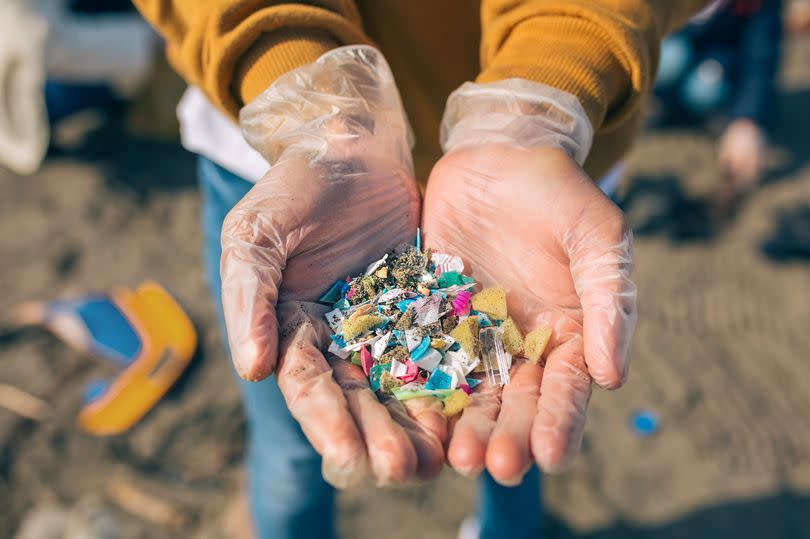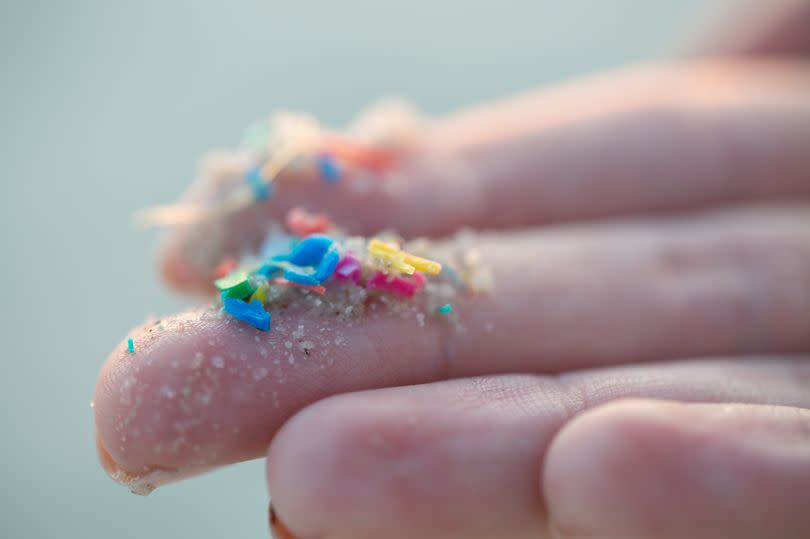Microplastics discovered in all human testicles tested in 'concerning' new study

Researchers have found significant levels of microplastics in the testicular tissue of both humans and dogs, raising concerns about potential impacts on human reproductive health.
In a new study, published in the journal Toxicological Sciences last week, scientists reported the discovery of 12 types of microplastics in 47 canine and 23 human testes. The study reported these plastics were found in "all" tested human and canine testicle tissue samples.
These extremely small pieces of plastic debris found in the environment is a result of the disposal and breakdown of consumer products and industrial waste, including shopping bags and bottles.
The University of New Mexico team also developed a new analytical method to measure the amount of microplastics in the tissue samples, which showed a correlation between certain types of plastic and reduced sperm count in the canine samples.
The discovery that such microplastics were able to enter the reproductive system was rather "surprising", according to team leader Xiaozhong "John" Yu, MD, PhD, MPH, a professor in the UNM College of Nursing.
Yu, who researches the effects of various environmental factors on the human reproductive system, noted that heavy metals, pesticides and endocrine-disrupting chemicals have all been linked to a global decrease in sperm count and quality in recent years.

A discussion with his colleague Matthew Campen, PhD, a professor at the UNM College of Pharmacy who has recorded the presence of microplastics in human placentas, led him to consider whether another factor might be involved.
Professor Yu said: "Have you considered why there is this decline (in reproductive potential) more recently? There must be something new." This question spurred Yu to devise a study using the same experimental approach previously applied in placenta research by Campen's lab.
Yu's team sourced anonymized human tissue from the New Mexico Office of the Medical Investigator, which gathers tissue during autopsies and retains it for seven years before disposal. The canine samples were procured from City of Albuquerque animal shelters and private vet clinics that carry out spaying and neutering procedures.
Researchers treated the tissue samples chemically to break down fats and proteins, then spun them in an ultracentrifuge to isolate a small plastic residue at the base of each tube. They subsequently heated the plastic remnants to 600 degrees Celsius in a metal container.
A mass spectrometer was employed to identify the gases released as various plastics combusted at distinct temperatures.
In canines, the testicular tissue revealed an average microplastic concentration of 122.63 micrograms per gram of tissue (with a microgram being one-millionth of a gram). Human tissue displayed an average concentration of 329.44 micrograms per gram almost triple that found in dogs and markedly higher than the levels Campen detected in placental tissue.
"At the beginning, I doubted whether microplastics could penetrate the reproductive system," admitted Yu, adding: "When I first received the results for dogs I was surprised. I was even more surprised when I received the results for humans."
Microplastics are small particles that form when plastic breaks down under ultraviolet radiation from the sun or in landfills. These tiny pieces can be swept up by winds or washed into nearby rivers and streams - some fragments are so minuscule they're measured in nanometres (one billionth of a metre).
The researchers discovered that both human and canine tissues predominantly contained polyethylene (PE), a substance used in manufacturing plastic bags and bottles. In dogs, this was followed by PVC, a material commonly used in industrial, municipal, and household plumbing as well as many other applications.

Interestingly, the team managed to count the sperm in canine samples - though they were unable to do so with the preserved human ones. They noticed a correlation between higher levels of PVC in the tissue and a decrease in sperm count, explained Yu.
However, there wasn't any link with tissue concentration of PE. "PVC can release a lot of chemicals that interfere with spermatogenesis and it contains chemicals that cause endocrine disruption," Yu commented on the type of plastic correlating with potential function.
Studying both human and dog tissue provided valuable insights considering that dogs share our environment as well as some biological traits.
In comparison to rats and other creatures, dogs are closer to humans, according to Yu. "Physically, their spermatogenesis is closer to humans and the concentration has more similarity to humans," he explained.
He also pointed out that canine sperm counts appear to be on the decline. He added: "We believe dogs and humans share common environmental factors that contribute to their decline."
The scientist noted that microplastics become pervasive in our surroundings despite global plastic production continuing to increase. The average age of the men in the OMI autopsy samples was 35 years, suggesting they would have been exposed to plastics decades ago when there was less plastic around.
"The impact on the younger generation might be more concerning," he said, given the current higher levels of plastic pollution.
This brings up the need for further studies to explore how microplastics might be impacting sperm production in testicles. He concluded with a call to investigate the unknowns: "We have a lot of unknowns. We need to really look at what the potential long-term effect. Are microplastics one of the factors contributing to this decline?"
In sharing his research, Yu emphasised the importance of not causing alarm. "We don't want to scare people," he explained.
"We want to scientifically provide the data and make people aware there are a lot of microplastics. We can make our own choices to better avoid exposures, change our lifestyle and change our behavior."
Don't miss the latest news from around Scotland and beyond. Sign up to our daily newsletter.

 Yahoo News
Yahoo News 
